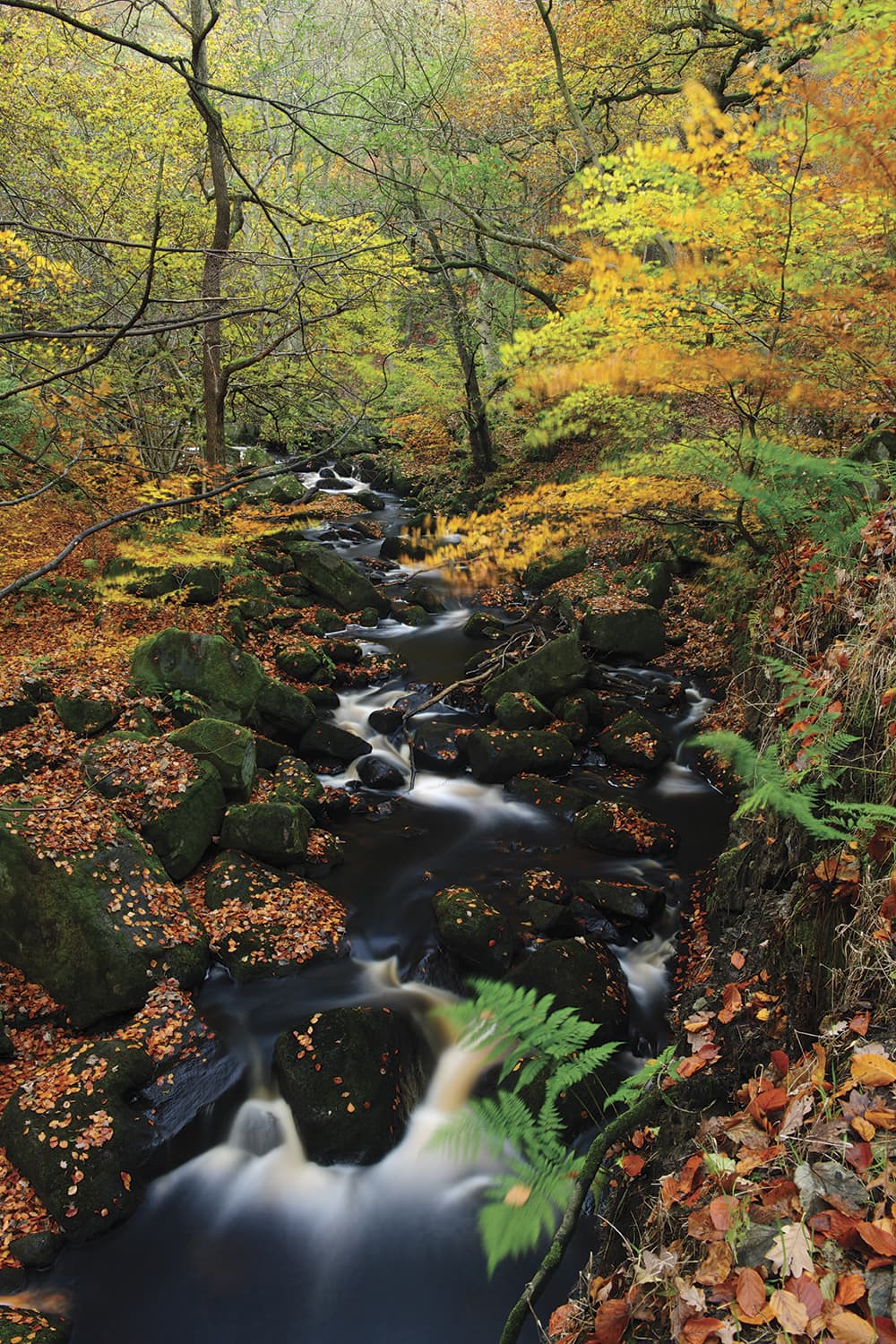
There are several abandoned millstones scattered around the gorge. Images by Andrew Mason
Burbage Brook tumbles down from the Peak District’s moors into Padley Gorge, a steep rocky valley dense with deciduous native woodland. In autumn, it flows over multiple rocky cascades, and past oak and beech trees that are turning shades of green, red and brown. Together, gorge, brook and woodland create endless photographic opportunities. To add to these, there are several abandoned millstones scattered around.
There are numerous small rocky cascades along the length of Padley Gorge, and all offer different perspectives and pictures. As well as forming a focal point for images of the water, they make great subjects themselves. Meanwhile, the woodland lends itself to close-ups and more abstract images. I like to make use of the in-camera multiple-exposure blending function. By using combinations of different focal points and varying degrees of sharpness, I can produce images of the wood and individual trees with an ethereal feel.
Other potential images are the abandoned millstones. One of them can be found in a small dell, a short distance off to the right of the path and a few hundred metres from the lowest entrance to the gorge. Another millstone can be found beside the path at the upper end of the gorge. This upper millstone is under a tree where the roots have grown over a rocky outcrop.
Shooting advice
How to get there
The best way to access Padley Gorge is from its lowest point. Park on the road that leads off the B6521 from Nether Padley to Grindleford train station. The entrance to the gorge is a short walk along the road that leads past Grindleford station café. Go over the bridge, and it’s on the right.
While there are well-defined paths through Padley Gorge, the going can be a little tricky in places with slippery rocks and tree roots. Be especially careful where there are steep drops. As you walk uphill, the path follows the right-hand side of the gorge. A third of the way along, the path splits into two, with a footbridge over Burbage Brook. It is possible to photograph from both sides of the gorge, but I prefer the right-hand side. The gorge is 800 metres from start to finish.

Autumn is the perfect time to visit Padley Gorge, as colourful leaves often fall into the fast-flowing water
Time to visit
Padley Gorge can be photographed all year round, but is at its most photogenic in autumn when the trees are at their most colourful. It’s best photographed on a bright but overcast day, when the contrast in the wood is minimised and colours are saturated; these can be even more enhanced when the gorge is wet.
Food and lodging
For something to eat and drink, Grindleford Station Café is very popular. The National Trust has a tea room on the Longshaw Estate, just outside Grindleford. If you’re looking to stay over, there are a number of B&Bs, small hotels and campsites dotted around the Peak District National Park.

Numerous small rocky cascades can be found along the length of Padley Gorge
Kit list
Wellies
Padley Gorge can be muddy and wet, with some of the best viewpoints in the shallower parts of Burbage Brook itself. Wellies are a must, unless you are prepared to get your feet wet.
Umbrella
For rainy days, or when venturing out just after it has rained, an umbrella is useful for keeping water off camera equipment. It also acts as a shield, allowing you to change lenses without water splashing inside them or inside the camera.
Polariser
A polariser will not only cut out reflections and saturate colours, but it will also increase shutter speeds, enabling longer exposures of flowing water. Used together with an ND filter, the water will be rendered as a pleasing blur.
Andrew Mason is a professional nature photographer. His work is widely published and has been used in books, magazines and calendars, and by corporate and government clients. See www.andrewmasonphotography.co.uk







